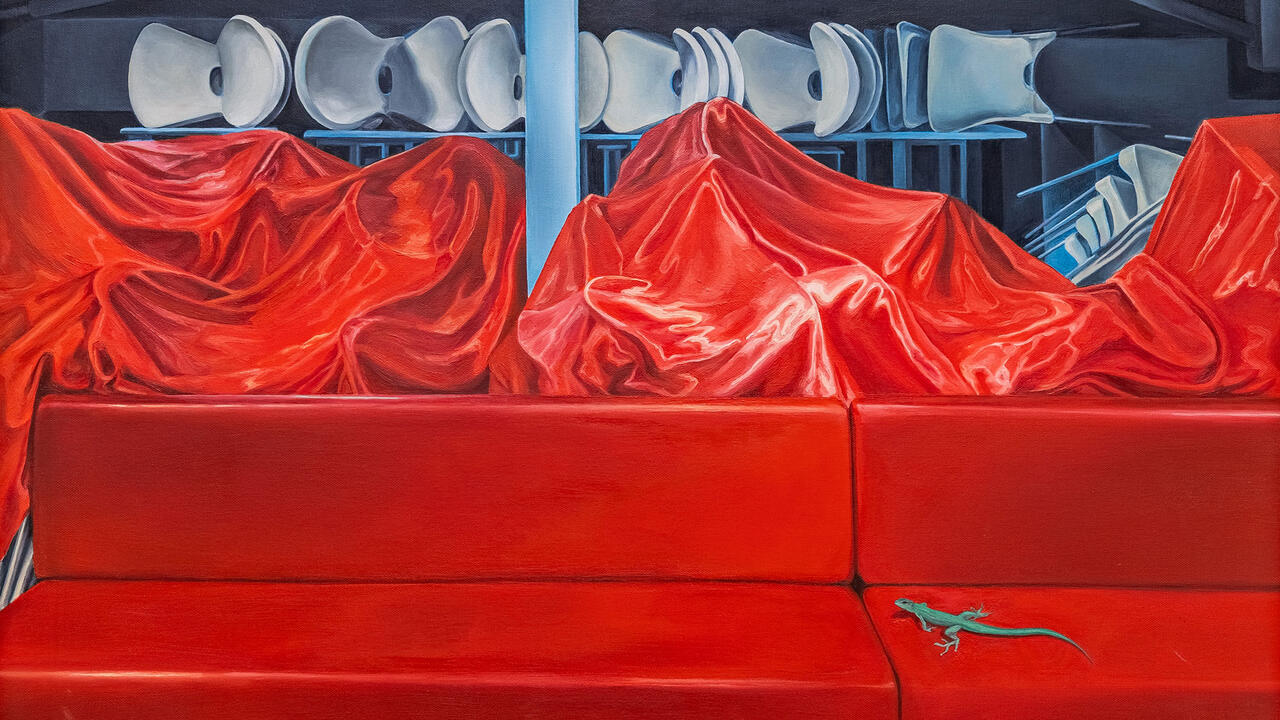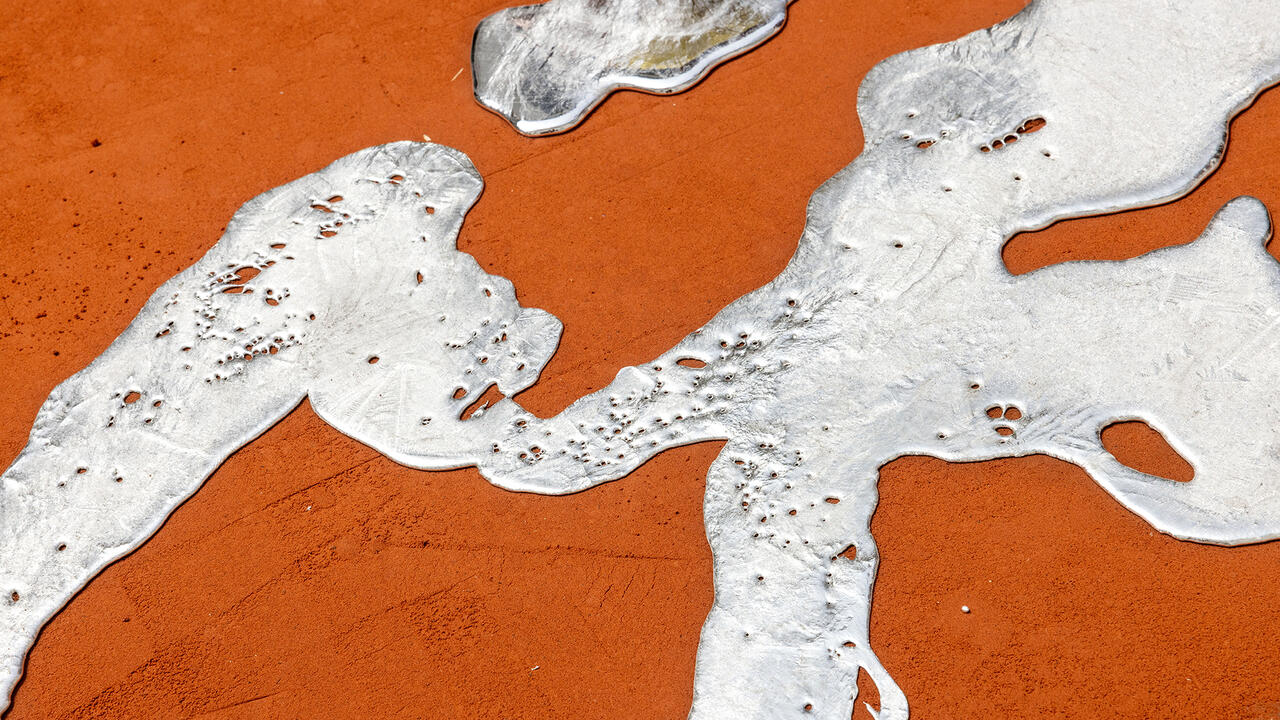Nil Yalter and Bilge Friedlaender
ARTER, Istanbul, Turkey
ARTER, Istanbul, Turkey

ARTER closed 2016 with two concurrent solo shows by female Turkish artists – Bilge Friedlaender and Nil Yalter– whose practices matured abroad, in Paris and in New York respectively, during the politically turbulent decades of the 1970s and ’80s. Despite dealing with experiences of cultural displacement in contrasting ways, the two artists meet in exploring the political and ethical potential of abstraction – whether partial or complete.
Yalter’s show, curated by Eda Berkmen, opens on the ground floor with a thoughtful mix of works from the 1970s and ’90s, tracing the unlikely twinning of the abstract and the documentary in the artist’s oeuvre. The centrepiece here is the chilling installation Deniz Gezmis¸(1972), named after a young Turkish revolutionary who was sentenced to death. Five pieces of framed butcher’s paper are each painted with three identical grey circles that ominously advance towards a thin line. The distance between the circles and this line is marked in centimetres, except for the fifth panel, which shows a hollowed-out trio of circles bisected by the line. The measurements and the sixth paper outlining the legal processes leading to the young men’s deaths gesture towards the inhuman calculations that underpin state terrorism.

On the first floor, two rooms are dedicated to Yalter’s examination of gender and sexuality – in contrast to the majority of works here (perhaps too many), which focus on the timely issue of migrants’ living conditions. In the video installations Le Chevalier d’Éon (The Knight of Éon, 1978) and Harem (1979-80), narratives are re-imagined through a symbolic yet austere language. The latter focuses on the romantic relationship between two odalisques and is accompanied by photo-collages featuring murky photographs of traditional coffee rituals or the abandoned imperial harem in which women were held captive away from prying eyes. Detailed architectural drawings of decorative motifs from Istanbul’s Topkapı Palace fill the surrounding papers, standing in for the Sultan’s luxurious form of patriarchal oppression. In both installations, Yalter’s use of mirrored split-screens, isolated body parts and cascading monitors builds up to a singular effect turning the forbidden bodies into an object of curiosity.
Friedlaender’s first solo show following her death in 2000, curated by her daughter Mira Friedlaender and Is¸ın Önol, is a more subtle affair focusing on the artist’s relationship to minimalism. It covers a momentous decade (1975–83) of her underappreciated practice, exposing the personal vocabulary she developed in her eponymous 1977 artist’s book, including ‘string’, ‘tear’ and ‘torn’. My Square (1975), for example, depicts two triangles in shades of lilac making up a square. As taut white strings circumscribe the darker triangle, their intersection becomes a curious site where light and dark, material and shadow, may fleetingly co-exist.

Works such as Dream Time Places #2 with Flying Shape (1975) and River/House/Book (1981) reveal Friedlaender’s surprising interest in fiction. She once wrote: ‘A line would not exist if we were not people. The whole thing is a fiction.’ In the former, a blank piece of paper has been torn in two, the tear then traced in pen through the middle of a smaller piece of black paper, only for the black rectangle also to be halved. When the papers are superimposed, the two ‘tears’ converge as their ghostly versions in ink and pencil hover below on contrasting dark and light backgrounds. More poignantly, River/House/Book transforms unfolded leporellos into undulating rivers on beds of sand in cedar boxes. The addition of an open bamboo structure offers shelter to ‘exhausted’ waves. Such works embody Friedlaender’s desire for a more equitable world, in which the human and non-human are invariably treated with care and love. In both Friedlaender and Yalter's exhibitions, margins – whether pictorial, ethical or political – simultaneously materialize and fade through their skilled use of abstraction.
Lead image: Bilge Friedlaender, Square Mutation: Denying Gravity #10 (detail), 1975, watercolour and wire on paper, 56 x 76 cm. Courtesy: ARTER, Istanbul






















